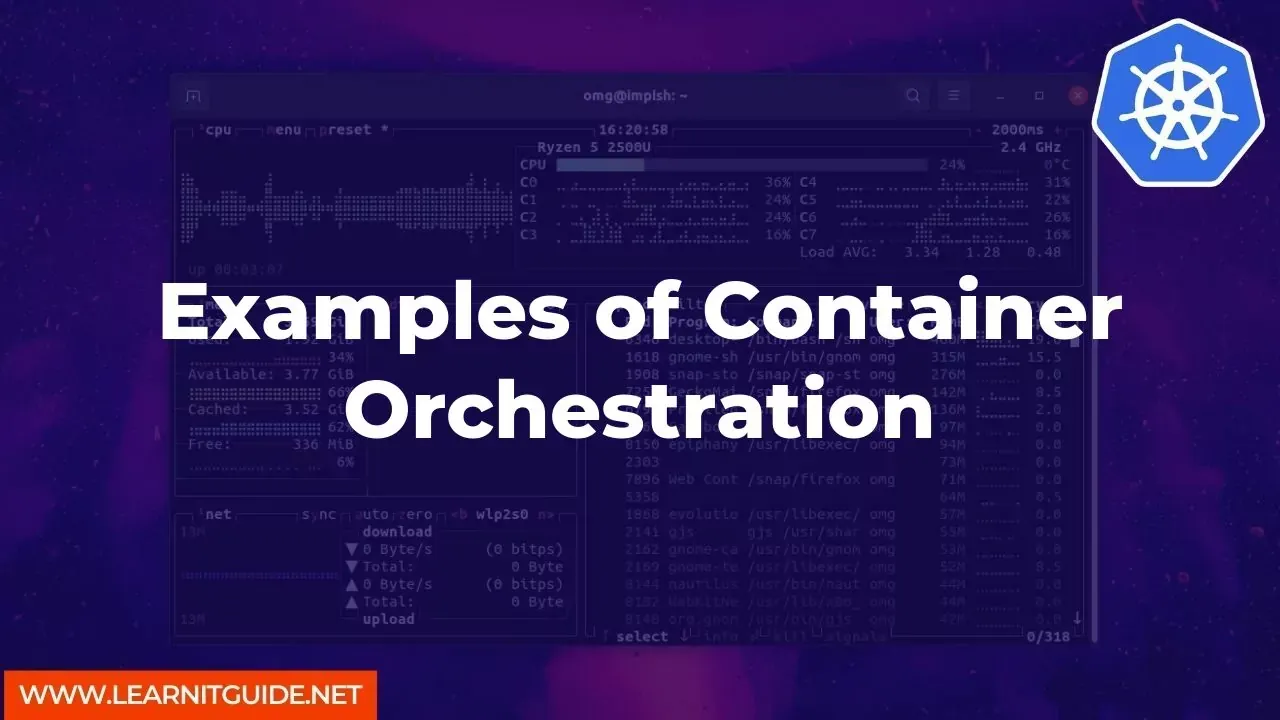Container orchestration is the process of managing the deployment, scaling, and automation of containerized applications. It allows developers to focus on writing code, while the orchestration tool takes care of the rest. In this article, we will explore some popular examples of container orchestration tools.
- Kubernetes
Kubernetes is the most widely used container orchestration tool. It was originally developed by Google and is now maintained by the Cloud Native Computing Foundation (CNCF). Kubernetes can manage the deployment, scaling, and automation of containerized applications across multiple hosts.
To deploy an application in Kubernetes, you need to create a deployment object. This object specifies the container image to be used, the number of replicas, and other configuration details. Here's an example:
apiVersion: apps/v1
kind: Deployment
metadata:
name: myapp
spec:
replicas: 3
selector:
matchLabels:
app: myapp
template:
metadata:
labels:
app: myapp
spec:
containers:
- name: myapp
image: myregistry/myapp:latest
ports:
- containerPort: 80
This deployment object will create three replicas of the myapp container image and expose port 80 to the outside world.
- Docker Swarm
Docker Swarm is a container orchestration tool that comes bundled with Docker. It allows you to deploy and manage containerized applications across a cluster of Docker hosts. Docker Swarm uses the same API as Docker, so it's easy to use if you're already familiar with Docker.
To deploy an application in Docker Swarm, you need to create a Docker Compose file. This file specifies the container images to be used, the number of replicas, and other configuration details. Here's an example:
version: '3'
services:
myapp:
image: myregistry/myapp:latest
replicas: 3
ports:
- "80:80"
This Docker Compose file will create three replicas of the myapp container image and expose port 80 to the outside world.
- Apache Mesos
Apache Mesos is a distributed systems kernel that can manage resources across multiple data centers or cloud providers. It allows you to deploy and manage containerized applications, as well as other types of workloads, such as Spark jobs and Hadoop jobs.
To deploy an application in Apache Mesos, you need to create a Marathon application definition. This definition specifies the container image to be used, the number of instances, and other configuration details. Here's an example:
{
"id": "/myapp",
"instances": 3,
"container": {
"type": "DOCKER",
"docker": {
"image": "myregistry/myapp:latest",
"network": "BRIDGE",
"portMappings": [
{ "containerPort": 80, "hostPort": 0 }
]
}
}
}
This Marathon application definition will create three instances of the myapp container image and expose port 80 to the outside world.
So, container orchestration tools like Kubernetes, Docker Swarm, and Apache Mesos make it easy to manage containerized applications at scale. By automating tasks like deployment and scaling, developers can focus on writing code and delivering value to their customers.
Related Searches and Questions asked:
That's it for this post. Keep practicing and have fun. Leave your comments if any.








0 Comments